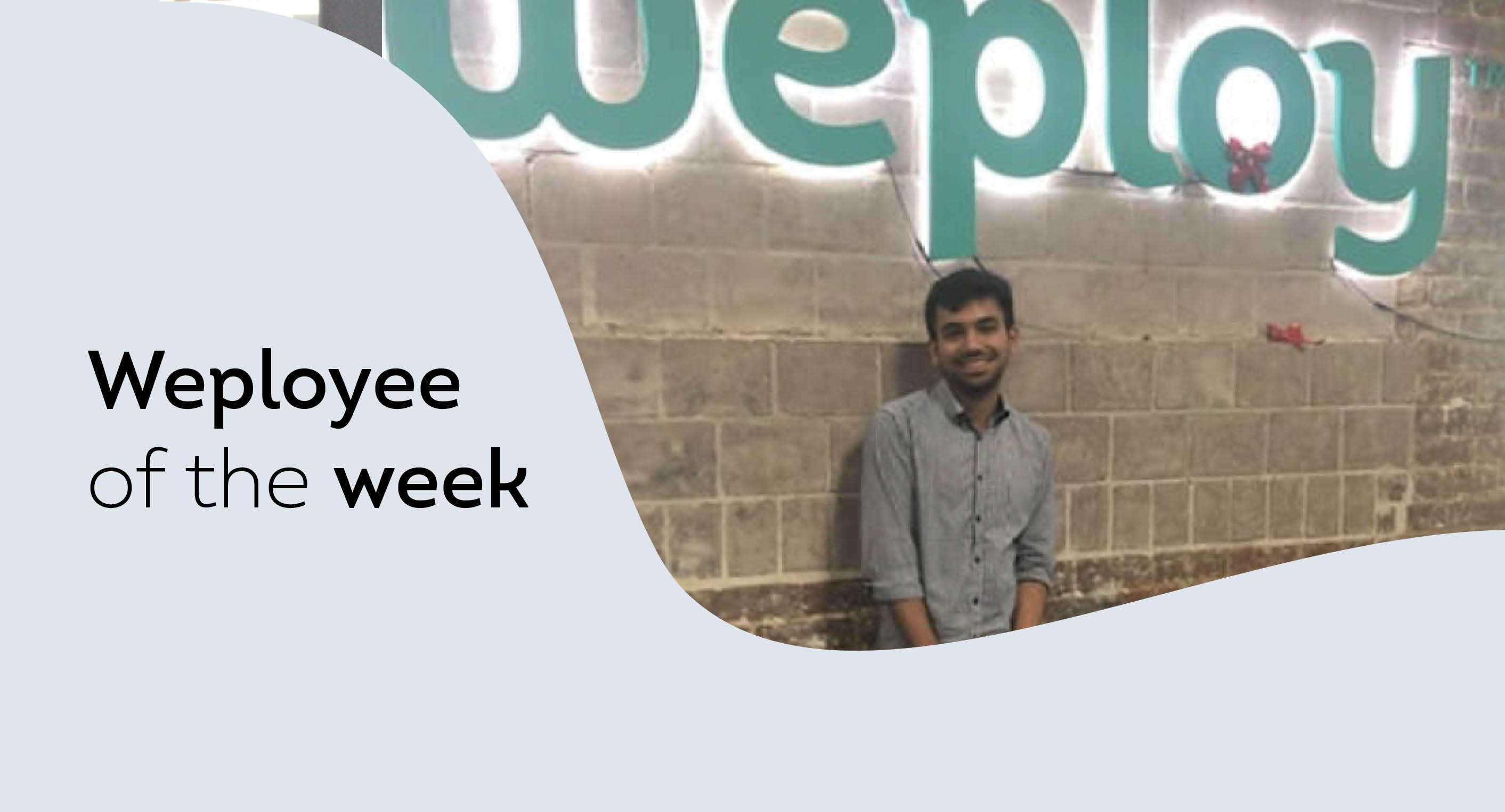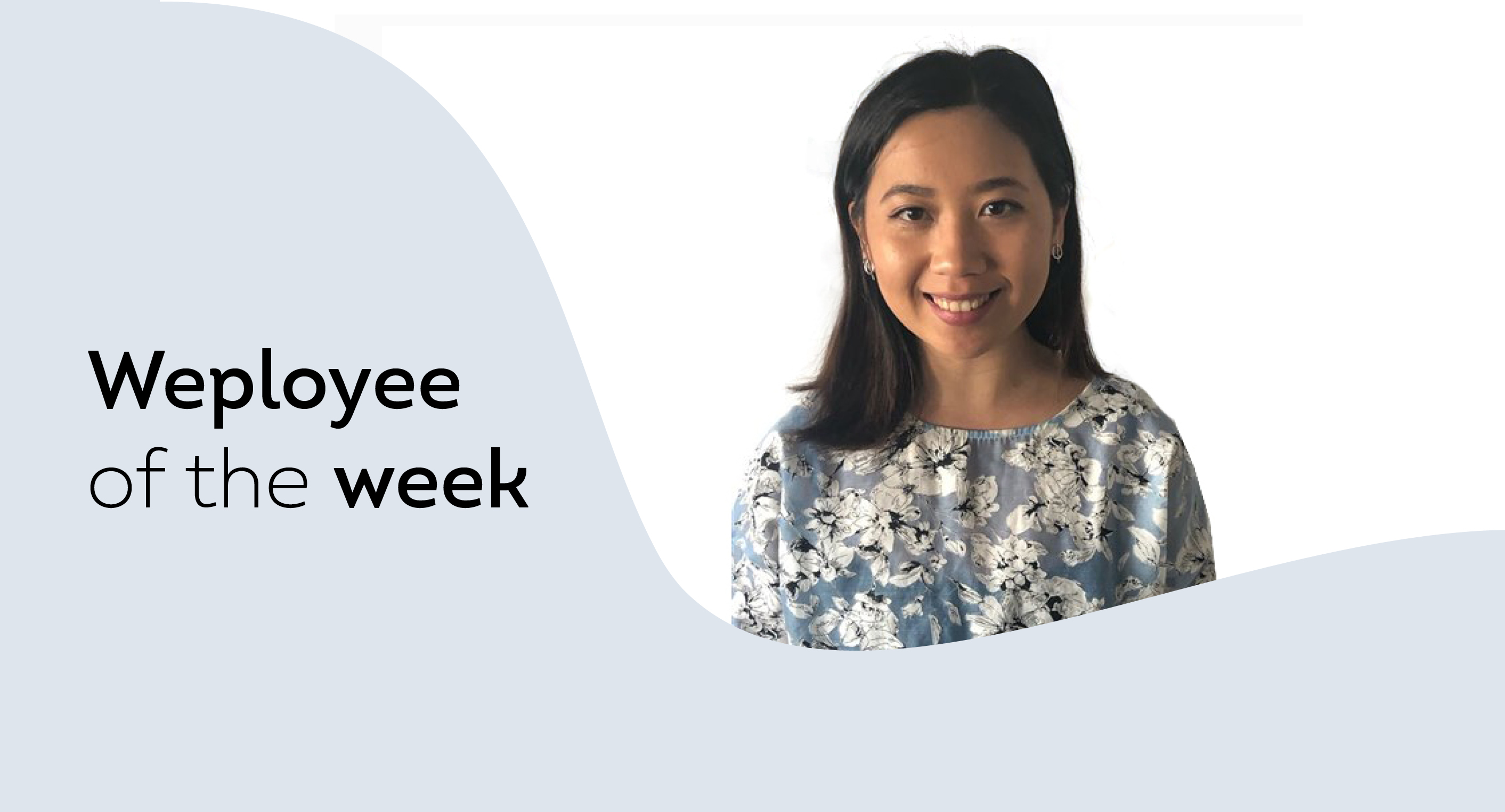The world of work is changing. We’re seeing a massive shift from traditional work and full-time employment to freelancing, part-time work, remote work and temporary independent contracting with different teams, on varying projects. This is often referred to as the gig economy. It is reported that if the gig economy keeps growing at its current rate, more than 50% of the US workforce will participate in it by 2027.
There are many reasons why a more temporary kind of working arrangement is preferable for the workers themselves and for the businesses that use them. For businesses, having the ability to scale up as demand rises at peak times, backfill for long periods of absence, and bring in fresh skillsets can help them grow faster and foster innovation.
For the workers themselves, there are multiple benefits and below is a list of five of the top ones, as voted for by our community of temporary, on-demand staff that we like to call - Weployees.
1. Flexibility
We conducted a quick survey of our community of Weployees, and over 40% reported that the ability to fit work around life is the best thing about being a Weployee, instead of the other way around. Many of our Weployees are business owners themselves, or have other passion projects on the go. They are looking to fit some work in around their studies. They are taking career sabbaticals and want to continue earning a wage whilst having some time and space to think about their next move. Working in short term contracts by nature, is flexible, but with the NEW ‘Multiple Jobs’ feature, it is easier than ever for Weployees to line up jobs to suit their schedules in the future. Even in a current engagement, upcoming jobs can still be viewed and planned in the App up to two weeks in advance. Many of our Weployees who used to work freelance jobs before Weploy told us they can remember feeling anxious about where their next paycheck was coming from. The new feature makes it so much easier to plan out working commitments and forecast incomings.
Weployers will be notified when a Weployee engagement is due to finish, and have the opportunity to extend their job so that the Weployee can't book themselves onto a new job!
2. Varied Environment and Teams
The second most popular benefit to being a Weployee was “I enjoy varying my working environments/team”. The workforce is becoming more advanced and educated by the day and individuals must be “continual learners” to maintain a competitive edge. This is true for everyone, even those in traditional office settings, but it’s much easier to maintain that momentum if you’re constantly being challenged in new working environments with new people with varying skills to learn from. Experiencing varying businesses means increased exposure to new systems, processes, ways of working, personalities and leadership styles, all of which will teach our temp staff valuable, transferable skills that they can bring to YOUR business.
3. Being your own Boss
Temp or on-demand staff (Weployees) get to choose the type of work they do and when to do it. They are able to make choices that suit their personality, their needs and that allow them to operate at their fullest. They have experimented with different assignments in different departments and with cross-functional teams, so they've learnt what to look for in a job and what to avoid to ensure they're happy and operating at their maximum.
This degree of freedom does require a corresponding amount of self-discipline, and that doesn’t come easily to everybody. But our temps (Weployees) are self-starters that prefer to be in the driving seat and can be relied upon to step in and start adding value to your business from day one.
4. Try Before you Buy
For many people, the career options can seem endless and it can be daunting to know where to focus. For those who are not sure what kind of company they want to work at or in what field, they can try a stint at a few different places before deciding what to pursue for a more traditional full time career, or whether to drill down and specialise further. Likewise, job ‘tryouts’ or auditions are largely replacing traditional interview methods, enabling employers to assess capabilities for a longer period of time, and from multiple perspectives before jumping into a longer term contract. A few of our Weployees have worked up through the ranks of some of Australia’s largest corporates and have C-Suite experience, but have decided later on in life, they’d like a fresh start and a new experience. When you post a job on Weploy, you may just find yourself with an ex-CEO showing up at reception! Many of our other Weployees have gone temp to perm at companies they've worked with through Weploy who just can't face letting them go when the contract is over. One example of a temp-to-perm ex Weployee is Bryce.
5. Overcome Unconscious Bias
Unfortunately, there is still a problem with unconscious bias in the workforce and hiring discrimination is a very real issue. The evidence shows that White candidates get 36% more callbacks than equally qualified Black candidates and 24% more than Latinos - even with identical resumes where only the name is changed. Whether hiring managers are aware of it or not, talent with valuable skills and considerable experience to bring into the Australian market are judged on their name, where they’ve been to school or the fact they don’t have any local experience. This is not only unjust, but could also be limiting business growth. Studies have shown that diversity of thought has a direct influence on innovation and increased revenue and employing team members from different backgrounds who will approach problems with a different lens is a shortcut to this diversification of thought.
For candidates who are comfortable operating in uncertain environments, driving their own development with freedom and flexibility - the Gig life is the perfect working arrangement. Feeling happier and more empowered at work is directly linked to greater productivity and better business outcomes, so hiring a Weployee is like hiring happiness on-demand! Signing up is free, so trial a temp via Weploy today and experience the benefits for yourself.

What was your first job?


When I think about the best leaders I've worked with there has always been one element that stands true. I trust and respect their decision making. I don't have to want to be their best friend, but I have to believe in the decisions they make.
I'm faced with a multitude of decisions every day and my biggest priority, both professionally and personally, is to constantly improve how I make decisions. So I thought I'd share the four most important principles I've developed when it comes to making decisions. I've also added further reading within each principle, and if you're keen to learn more I'd highly recommend subscribing to the podcast and blog of Farnam Street as it's a goldmine of wisdom within this field of study.
Principle 1: Prioritise
We are faced with a paradox of our own evolutionary making. People who lack choice, seem to want and fight for choice but this has a cost. The more choices and decisions we make, the less effective we become over time at choice making. It's well understood now that we have limited resources when it comes to making decisions, and continually working this muscle creates decision fatigue. We see this in all parts of life, with research showing judges make poorer decisions later in the day. But we're not just talking about big decisions, choices come at us from all angles each day. Choosing what coffee to order, which shampoo to buy, if I should snooze my alarm or get up. No matter how trivial, they all have an impact on our ability to make good decisions. So to improve, the only option is to limit the number of decisions you make. A great tool I found on the Farnam Street blog was a take on the 2x2 Eisenhower matrix that categorised decisions into four categories.
- Irreversible and inconsequential
- Reversible and inconsequential
- Reversible and consequential
- Irreversible and consequential
Those decisions that are inconsequential, whether reversible or not, are to be delegated. For decisions that have consequences but are reversible - there is opportunity to run experiments of which your team or individuals can share the learnings. The only decisions that should require your brain power are those which are consequential and irreversible. Of course this is only a framework and you will have to clearly define what the terms ‘consequential’ and ‘reversible’ mean to you and your business. But this has already helped me focus on what matters and build capability and empowerment in my teams.
Further reading: https://fs.blog/2009/07/an-introduction-to-decision-making/
Principle 2: Give Yourself Time
It's easy to think that great decision makers are those that are instantly able to weigh up a scenario, identify the possible outcomes and come to an immediate decision. It's impressive but what's the rush? If this really is an important decision - by which I mean one that is both consequential and irreversible, then the desire to make an immediate decision is due to us falling prey to a cognitive bias of pushing to do what is easiest with the available information.
It's hard to think of opposing points of view or other alternate outcomes but that's really what success in my job is all about. I try to give myself time to think about as many contributing factors and apply as many lenses onto a situation as I can. Then I give myself thinking time. Personally, I’ve found I need to change my environment, go for a walk, or sit in another part of the office to let my mind wander around the decision. Play thought experiments and try to walk through the outcomes with different hats on.
One great model from the mathematician Carl Gustav Jacob Jacobi is to inverse the problem. To do this, rather than try to think of solving a problem forward (for instance - trying to increase productivity in your team), instead invert the problem, and ask what are all the things that I could do to reduce productivity in my team. Then don't do them! It may not solve the problem you're facing but it can mean you don't factor in arguments that can lead to poor outcomes.
Further reading: https://fs.blog/2014/06/avoiding-stupidity/
Principle 3: Be accepting of ignorance
First let's define what a decision in uncertainty means. Uncertainty is when we don't know the outcome of a decision and we don't know the probability of those outcomes. This is different from a decision in risk - where we don't know the outcomes but we do know the probabilities. A professional poker player will know the probabilities of a win based on their hand but the outcome is still unknown. So, when dealing with uncertainty you are going to be ignorant of some elements that are relevant and consequential to a decision. Importantly there are two states of ignorance.
- Primary ignorance: If you cannot see it or understand it, it does not exist
- Recognised ignorance: We recognise we cannot predict all the outcomes
It may seem that if we can't predict the unknowable outcomes any better if they are recognised or not... then why bother. But when you are aware of your own ignorance, you can start to look for sources of cognitive bias that could cloud your decision-making. There are plenty of such biases that can affect how we approach decision making - but the three that are most relevant are:
- Overconfidence Bias: The subjective confidence that accuracy of our own beliefs is higher than the objective accuracy
- Salience Bias: We tend to focus on information that is more prominent and perceptible to us, ignoring factors that are less so.
- Confirmation Bias: We tend to recall examples that reinforce our existing beliefs
Personally, I look to embrace my own ignorance when it comes to uncertainty and try to uncover how my decisions could be coloured.
Further reading: https://sites.hks.harvard.edu/fs/rzeckhau/anatomy of ignorance.pdf
Principle 4: Optimise for the long term
Another factor I find important is to optimise decisions for the long term. Again - the human brain is hard-wired to seek instant gratification. For me, this comes down to looking for win/win scenarios and what is called second order thinking. They are strikingly simple concepts in theory but both require conscious effort to implement. Any relationship, if it is to last, must be win/win so when I'm considering which direction to go, it must benefit both my customer, and Weploy as a business, if it has any chance to prosper over time. The other model, second order thinking can be boiled down to a simple phrase:
And then what?
If I make this decision now, what happens tomorrow, what about in a weeks time, a month, year, 10 years… Not all decisions need you to go too far in the future, but thinking about the branches of possible outcomes through and then what is hugely valuable. I regularly find decisions come up that can be negative in the first order (have a high cost, slow down production etc.) but when we move to the second order and third order they can become a net positive. As all of my decisions should look to build long term, sustainable competitive advantage, second order thinking is essential if I am to succeed.
Further reading: https://medium.com/@noahmp/second-order-thinking-3fc2a224b131
So those are the four principles I try to use when making decisions, hopefully you find it valuable and I'd love to hear more about the most important tricks and models you use to improve your decision making.
Streamline your hiring
Business support staff with no hidden fees. Start hiring anytime.

